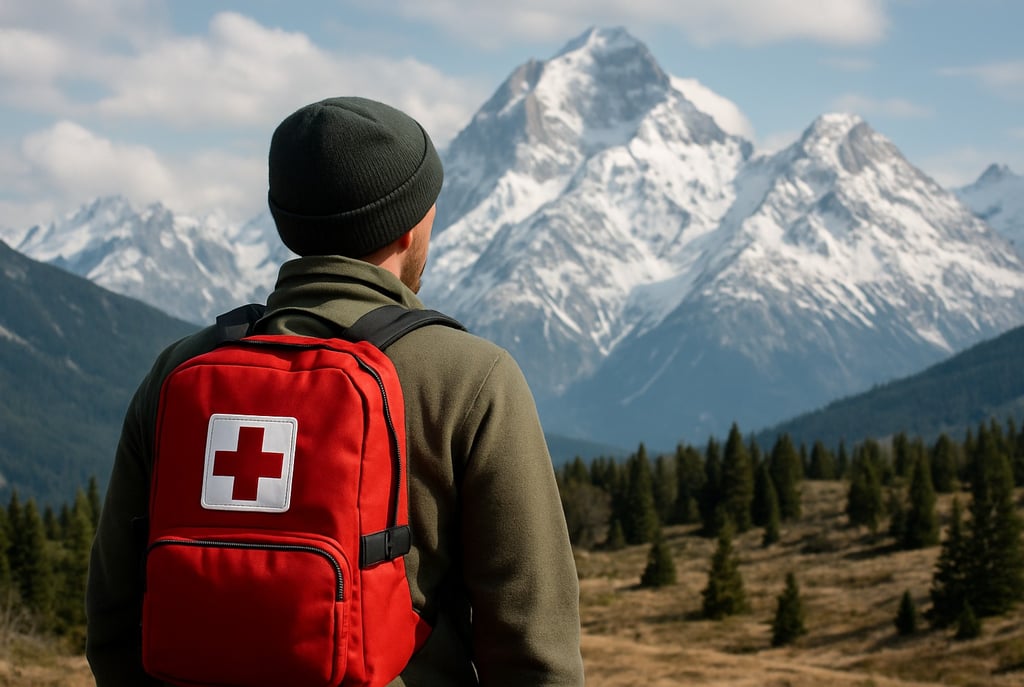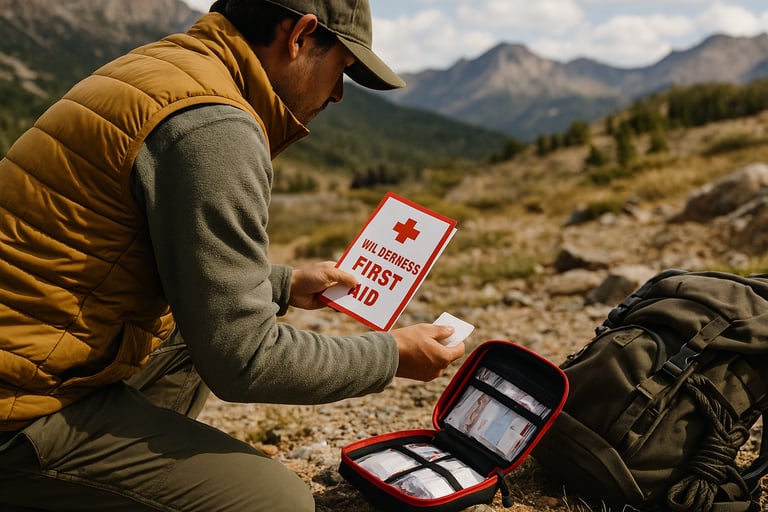Wilderness First Aid: A Beginner’s Guide to Staying Safe in the Outdoors
New to wilderness first aid? This beginner’s guide explains what it is, who it’s for, and why it matters. Learn the key concepts and life-saving benefits of wilderness emergency training — even if you’ve never taken a first aid course before.


Wilderness First Aid: A Beginner’s Guide to Staying Safe in the Outdoors
What Makes Wilderness First Aid Different
Wilderness first aid is a specialized form of emergency care designed for situations where professional medical help is not immediately accessible. Whether you’re hiking deep into the forest, camping in remote areas, or exploring off-grid terrain, it teaches you how to stay calm and act effectively when help is hours, or even days, away.
Unlike standard first aid, which assumes you’re within quick reach of emergency services, wilderness first aid prepares you for long wait times, difficult environments, and limited resources. It focuses on decision making, improvisation, and adapting to unpredictable situations.
Who Should Learn Wilderness First Aid
Wilderness first aid is ideal for anyone spending time outdoors — hikers, campers, backpackers, climbers, hunters, off-roaders, or even nature photographers. You don’t need to be a seasoned adventurer to benefit from it. Courses are designed to be beginner-friendly and walk you through essential skills step by step.
Most programs start with no assumption of prior medical knowledge. That means even if you’ve never taken a first aid course before, you’ll come away with confidence and practical knowledge that could save a life in a remote setting.
Core Concepts Taught in Wilderness First Aid
The training begins with the fundamentals: checking for hazards, performing a primary assessment, and monitoring breathing and circulation. But what sets wilderness first aid apart is its focus on real-world outdoor problems. You’ll learn how to clean and dress wounds using improvised materials, create makeshift splints from sticks or trekking poles, and handle prolonged care in the field.
Other topics include treating hypothermia, dehydration, burns, allergic reactions, and altitude sickness. You’ll also learn how to make a wilderness splint or sling using natural materials — a crucial skill when you’re far from professional help and need to immobilize an injury. Managing injuries like these is a major focus of wilderness care, especially when dealing with common wilderness injuries that happen in remote environments.You’ll also learn how to make evacuation decisions, assess risks, and manage patient care when you’re hours from outside help.
Why Wilderness First Aid Is So Valuable
Outdoor emergencies require a different mindset. A sprained ankle close to home is inconvenient. The same injury miles from the trailhead can turn into a serious crisis. Wilderness first aid helps you manage these situations with confidence and clarity.
By knowing how to stabilize injuries and monitor someone’s condition until help arrives, you’re not just helping yourself — you’re becoming a safer partner, friend, or trip leader for anyone who ventures outdoors with you.
How to Get Started With Wilderness First Aid
Most wilderness first aid courses are short, affordable, and widely available. Look for providers like NOLS, REI, SOLO, or Wilderness Medical Associates. Many classes last two days and include hands-on instruction, realistic simulations, and a certification valid for two years.
If you're still weighing the benefits, learn more about what you’ll actually learn in wilderness first aid training and see how it differs from standard first aid. The skills taught in these courses are tailored specifically for off-grid emergencies, and once you understand the difference, you’ll see why it’s so highly recommended for anyone who ventures beyond the beaten path.
Once you complete a course, you’ll not only walk away with a card — you’ll gain the peace of mind that comes with knowing you’re prepared. And that’s something every outdoor enthusiast should carry with them.


© 2025. All rights reserved About | Privacy Policy | Terms and Conditions | Affiliate Disclosure | Disclaimer


